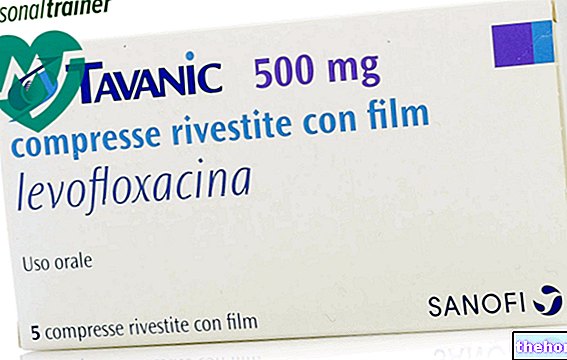Active ingredients: Baclofen
LIORESAL 10 mg tablets
LIORESAL 25 mg tablets
Lioresal package inserts are available for pack sizes: - LIORESAL 10 mg tablets, LIORESAL 25 mg tablets
- LIORESAL 10 mg / 20 ml solution for injection for intrathecal use, LIORESAL 10 mg / 5 ml solution for injection for intrathecal use, LIORESAL 0.05 mg / 1 ml solution for injection for intrathecal use
Why is Lioresal used? What is it for?
Pharmacotherapeutic group
Central action muscle relaxants
Therapeutic indications
Adults
Spastic hypertonia of the skeletal muscles in the course of multiple sclerosis. Spastic muscular hypertonia in diseases of the spinal cord, of infectious, degenerative, traumatic, neoplastic or unknown etiology: for example, spastic spinal paralysis, amyotrophic lateral sclerosis, syringomyelia, transverse myelitis, paraplegia or traumatic paraparesis, states of cord compression.
Spastic muscular hypertonia of cerebral origin, especially in the case of infantile encephalopathy, as well as following cerebral vasculopathy or in the course of cerebral affections of a neoplastic or degenerative nature.
Pediatric population (0-18 years)
Lioresal is indicated for the symptomatic treatment of spasticity of cerebral origin in patients from 0 to <18 years of age, especially in cases due to infantile cerebral palsy as well as following cerebrovascular accidents or in the presence of neoplastic or degenerative cerebral pathology.
Lioresal is also indicated for the symptomatic treatment of muscle spasms occurring in spinal cord diseases of infectious, degenerative, traumatic, neoplastic or unknown origin such as multiple sclerosis, spastic spinal paralysis, amyotrophic lateral sclerosis, syringomyelia, myelitis between
Contraindications When Lioresal should not be used
Hypersensitivity to the active substance or to any of the excipients
Precautions for use What you need to know before taking Lioresal
Psychiatric and nervous system disorders
Patients suffering from psychotic disorders, schizophrenia, depressive or manic disorders, confusional states, or Parkinson's disease should be treated with caution with Lioresal and under close surveillance, as these conditions may worsen.
Epilepsy
Particular attention must be paid to epileptic patients, as a lowering of the seizure threshold could occur; Seizures related to discontinuation of Lioresal treatment or overdose have been reported. It is advisable to maintain adequate anticonvulsant therapy and to monitor the patient carefully.
Others
Lioresal should be used with caution in patients with current or previous peptic ulcer, as well as in those with cerebrovascular disorders, with impaired respiratory or hepatic function.
Pediatric population
There is a very limited amount of clinical data on the use of Lioresal in children less than one year of age. Use in this patient population should be based on the physician's assessment of the individual benefit and risk of therapy.
Impaired renal function
Lioresal should be administered with caution in patients with renal impairment and in patients with end stage renal insufficiency it should only be given when the expected benefit outweighs the potential risk (see "Dose, method and time of administration").
Particular caution is required when combining Lioresal with drugs or medicinal products that can significantly affect renal function. Renal function should be carefully monitored and the daily dosage of Lioresal appropriately adjusted to prevent baclofen toxicity.
In patients with severe baclofen toxicity, in addition to discontinuation of treatment, unscheduled hemodialysis may be considered as an alternative treatment. In these patients, hemodialysis effectively removes baclofen from the body, relieves clinical symptoms of overdose and shortens recovery times.
Urinary disorders
Neurogenic disorders of bladder emptying may benefit from treatment with Lioresal.
In patients already suffering from sphincter hypertonia, acute retention of urine may occur; in these cases caution is recommended.
Lab test
In rare cases, elevations in aspartate aminotransferase, alkaline phosphatase and blood glucose levels have occurred. Periodic checks must therefore be performed, especially in patients with liver dysfunction or diabetes mellitus, to be sure that the drug does not cause any alteration of the underlying diseases.
Abrupt discontinuation of therapy
Anxiety and confusional states, delirium, hallucinations, psychotic, manic or paranoid disorders, seizures (status epilepticus), dyskinesia, tachycardia, hyperthermia and temporary worsening have been reported following abrupt discontinuation of Lioresal treatment, especially if of long duration. of spasticity known as "rebound phenomenon".
Postnatal convulsions have been reported following intrauterine exposure to oral Lioresal (see "Pregnancy and Lactation").
With the intrathecal formulation of Lioresal it has been reported that the clinical features of withdrawal syndrome may resemble those seen in autonomic dysreflexia, malignant hyperthermia, neuroleptic malignant syndrome or other conditions associated with hypermetabolic states or diffuse rhabdomyolysis.
Except in cases where serious side effects have occurred or in the case of overdose, treatment should always be discontinued gradually, gradually reducing the dosage over a period of approximately 1-2 weeks.
Posture and balance
Lioresal should be used with caution if spasticity is necessary for maintaining posture and for balance in locomotion (see "Dose, method and time of administration").
Interactions Which drugs or foods can modify the effect of Lioresal
Tell your doctor or pharmacist if you have recently taken any other medicines, even those without a prescription.
Levodopa / dopa-decarboxylase inhibitor (carbidopa)
Cases of mental confusion, hallucinations, headache, nausea and agitation have been reported in patients with Parkinson's disease receiving Lioresal and levodopa (alone or in combination with a dopa-decarboxylase inhibitor). Worsening of parkinsonism symptoms has also been reported. Therefore, caution should be exercised when Lioresal and levodopa / carbidopa are co-administered.
Drugs That Cause Central Nervous System (CNS) Depression
When Lioresal is given concomitantly with other drugs that cause CNS depression, including other muscle relaxants (such as tizanidine), synthetic opioids or alcohol, the sedative effect may intensify (see "Precautions for use"). It also increases the risk of respiratory depression. In addition, hypotension has been reported with concomitant use of morphine and intrathecal baclofen. Careful monitoring of respiratory and cardiovascular function is recommended in patients with cardiopulmonary dysfunction and respiratory muscle weakness.
Antidepressants
During concomitant treatment with tricyclic antidepressants, the effect of Lioresal may be enhanced, causing marked muscle hypotonia.
Lithium
Concomitant use of oral Lioresal and lithium resulted in worsening of hyperkinetic symptoms. Therefore caution should be exercised when concomitant administration of Lioresal and lithium.
Antihypertensives
Since concomitant treatment with antihypertensives may further decrease blood pressure, the dose of the antihypertensive should be adjusted accordingly.
Drugs that reduce kidney function
Drugs or drugs that can significantly affect kidney function can reduce the elimination of baclofen producing toxic effects (see "Precautions for use").
Warnings It is important to know that:
Fertility, pregnancy and breastfeeding
Ask your doctor or pharmacist for advice before taking any medicine.
Fertility
There are no data available on the effect of baclofen on human fertility. There are no data to support specific recommendations for women of childbearing age.
Pregnancy
There are no adequate and controlled studies in pregnant women. Baclofen crosses the placental barrier and should only be used during pregnancy if the expected benefit outweighs the potential risk to the fetus.
A case of suspected withdrawal reaction (generalized seizures) has been reported in a one week old baby whose mother had taken baclofen during pregnancy. The seizures, which were refractory to various anticonvulsants, subsided within 30 minutes of baclofen being administered to the neonate.
Feeding time
In mothers treated with Lioresal at therapeutic doses, the active substance passes into breast milk, but in such small quantities that no undesirable effects are expected for the infant.
Effects on the ability to drive or use machines
Lioresal may be associated with undesirable effects such as dizziness, sedation, somnolence and impaired vision (see "Undesirable effects") which may reduce the patient's ability to react. Patients who have experienced such adverse events should be advised to refrain from driving and operating machinery.
Important information about some of the ingredients
Lioresal contains wheat starch. This medicine can be given to people with celiac disease. People with wheat allergy (other than celiac disease) should not take this medicine
Dosage and method of use How to use Lioresal: Dosage
Dosage
Therapy must always be started starting from low doses, which will be gradually increased. The minimum useful dose is recommended for an optimal therapeutic response. The optimal posology must be sought for each patient to reduce clonic states, spasticity and spasms in flexion or extension, but avoiding as much as possible the onset of adverse events.
To prevent excessive weakness and falls, Lioresal should be used with caution if spasticity is necessary for maintaining posture and for balance in locomotion, or if spasticity is necessary for maintaining functionality. Maintaining a certain degree of muscle tone can be important, also to allow for some occasional spasms to support circulatory function.
If no therapeutic benefit is evident 6-8 weeks after reaching the maximum dosage, a decision should be made whether to continue the administration of Lioresal.
The overall daily dose should be divided, preferably into three administrations in the adult and four in the child.
Treatment should always be discontinued gradually, gradually reducing the dosage over a period of approximately 1-2 weeks, except in cases where serious side effects have occurred or in the case of overdose (see "Precautions for use").
Adults
As a rule, treatment should be started with a dose of 5 mg administered three times a day. Dose titration should be proceeded with caution, which should be increased by 15 mg per day, divided into 3 daily administrations, every 3 days, until the optimal total daily posology is reached.
In some drug sensitive patients it may be advisable to start with a lower daily dose (5 or 10 mg) and reach this dose more gradually (see "Precautions for use"). The optimal dosage is usually between 30 and 80. mg per day Doses of 100 to 120 mg per day can be administered to carefully supervised hospitalized patients.
Pediatric population (0-18 years)
Usually, treatment should be started with a very low dose (corresponding to approximately 0.3 mg / kg per day) divided into 2-4 doses (preferably 4 doses). The dosage should be increased cautiously, at intervals of approximately 1 week, until it is sufficient for the individual needs of the child.
The usual daily dose for maintenance therapy is between 0.75 and 2 mg / kg of body weight. The total daily dose should not exceed a maximum of 40 mg / day in children less than 8 years of age. A maximum daily dose of 60 mg / day can be administered in children over 8 years of age. Lioresal tablets are not suitable for use in children weighing less than 33 kg.
Impaired renal function
In patients with impaired renal function Lioresal should be administered with caution and at lower doses. In patients undergoing chronic hemodialysis, baclofen concentrations in plasma are high and therefore a particularly low dose of Lioresal should be identified, eg. about 5 mg per day.
In patients with end stage renal insufficiency Lioresal should only be administered when the expected benefit outweighs the potential risk. Such patients should be closely monitored for timely diagnosis of early signs and / or symptoms of toxicity (eg drowsiness, lethargy) (see "Precautions for use" and "Overdose").
Impaired liver function
Lioresal should be prescribed with caution in patients with impaired hepatic function (see "Precautions for use").
Elderly patients (age ≥ 65 years)
Since undesirable effects are more likely to occur in elderly patients, the adoption of a cautious dosing regimen and appropriate patient monitoring is recommended.
Patients with spastic states of cerebral origin
Since undesirable effects are more likely to occur in patients with spastic states of cerebral origin, the adoption of a cautious dosing regimen and appropriate patient monitoring is recommended.
Method of administration
Lioresal should be taken during meals with some liquid
Overdose What to do if you have taken too much Lioresal
Signs and symptoms: mainly signs of central nervous depression are observed, such as: drowsiness, decreased consciousness, respiratory depression, coma. It is also possible the appearance of: confusion, hallucinations, agitation, convulsions, EEG anomalies (burst suppression pattern and triphasic waves), accommodation disturbances, altered pupillary reflex; generalized muscle hypotonia, myoclonus, hyporeflexia or areflexia; peripheral vasodilation, hypotension or hypertension, bradycardia, tachycardia or cardiac arrhythmias; hypothermia; nausea, vomiting, diarrhea, salivary hypersecretion; elevated liver enzyme values.
The concomitant intake of CNS-active substances or drugs (e.g. alcohol, diazepam, tricyclic antidepressants) may cause worsening of the overdose syndrome.
Treatment: no specific antidote is known.
For complications such as hypotension, hypertension, seizures, gastrointestinal disturbances, and respiratory or cardiovascular depression, supportive measures and symptomatic treatment should be undertaken.
After ingestion of a potentially toxic amount, activated carbon should be considered, especially in the first period after ingestion.
Gastric decontamination (eg gastric lavage) must be considered on a case-by-case basis, especially in the first period (60 minutes) after ingestion of a potentially life-threatening overdose. Comatose patients or patients with convulsions should be intubated before gastric decontamination.
Since the drug is eliminated primarily via the kidney, it is recommended to increase fluid intake and possibly administer a diuretic. Hemodialysis (sometimes unscheduled) may be useful in severe poisoning associated with renal insufficiency (see " Precautions for "use") In case of convulsions administer intravenous diazepam, with caution.
In case of accidental ingestion / intake of an excessive dose of Lioresal, notify your doctor immediately or go to the nearest hospital.
If you have any questions about the use of Lioresal, ask your doctor or pharmacist
Side Effects What are the side effects of Lioresal
Like all medicines, Lioresal can cause side effects, although not everybody gets them.
Undesirable effects occur mainly at the beginning of therapy (eg sedation, drowsiness), when the dosage is increased too quickly, or when high doses are used or if the patient is elderly. However, they are often transient and can be eliminated or attenuated by reducing the dosage and are rarely severe enough to require discontinuation of treatment. In patients with a history of psychiatric illness or with cerebral circulatory disorders (e.g. cerebral infarction) and in elderly patients the secondary reactions may be more severe.
In epileptic patients, a decrease in the seizure threshold and seizure attacks may be observed.
Some patients have shown increased muscle spasticity as a paradoxical reaction to treatment.
Many of the reported side effects are known to be associated with the underlying disease being treated. Adverse reactions (Table 1) are listed according to the MedDRA frequency convention: very common (≥ 1/10); common (≥ 1/100 to <1/10); uncommon (≥ 1/1000, <1/100); rare (≥ 1 / 10,000, <1/1000); very rare (<1 / 10,000); not known (frequency cannot be estimated from the available data).
Compliance with the instructions contained in the package leaflet reduces the risk of undesirable effects.
If any of the side effects gets serious, or if you notice any side effects not listed in this leaflet, please inform your doctor or pharmacist.
Expiry and Retention
Expiry: see the expiry date indicated on the package. The expiry date refers to the product in intact packaging, correctly stored.
Warning: Do not use the medicine after the expiry date indicated on the package.
storage
Protect from humidity and heat.
Medicines should not be disposed of via wastewater or household waste. Ask your pharmacist how to dispose of medicines you no longer use. This will help protect the environment.
Keep this medicine out of the sight and reach of children.
Composition
Lioresal 10 mg tablets
One tablet contains:
baclofen 10 mg
Excipients: wheat starch; magnesium stearate; povidone; microcrystalline cellulose; anhydrous colloidal silica.
Lioresal 25 mg tablets
One tablet contains:
baclofen 25 mg.
Excipients: wheat starch; magnesium stearate; povidone; microcrystalline cellulose; anhydrous colloidal silica.
Pharmaceutical form and content
Lioresal 10 mg tablets 50 tablets
Lioresal 25 mg tablets 50 tablets
Source Package Leaflet: AIFA (Italian Medicines Agency). Content published in January 2016. The information present may not be up-to-date.
To have access to the most up-to-date version, it is advisable to access the AIFA (Italian Medicines Agency) website. Disclaimer and useful information.
01.0 NAME OF THE MEDICINAL PRODUCT
LIORESAL 10 - 25 MG TABLETS
02.0 QUALITATIVE AND QUANTITATIVE COMPOSITION
LIORESAL 10 mg tablets
One tablet contains:
Active principle: racemic mixture of the R (-) and R (+) isomers of beta- (aminomethyl) -p-chlorohydrocinnamic acid (= baclofen): 10 mg.
Excipients with known effects: wheat starch
LIORESAL 25 mg tablets
One tablet contains:
Active principle: racemic mixture of the R (-) and R (+) isomers of beta- (aminomethyl) -p-chlorohydrocinnamic acid (= baclofen): 25 mg.
Excipients with known effects: wheat starch
For the full list of excipients, see section 6.1
03.0 PHARMACEUTICAL FORM
Tablets.
04.0 CLINICAL INFORMATION
04.1 Therapeutic indications
Adults
Spastic hypertonia of the striated muscles in multiple sclerosis.
Spastic muscular hypertonia in spinal cord diseases of infectious, degenerative, traumatic, neoplastic or unknown etiology: for example, spastic spinal paralysis, amyotrophic lateral sclerosis, syringomyelia, transverse myelitis, paraplegia or traumatic paraparesis, states of cord compression.
Spastic muscular hypertonia of cerebral origin, especially in the case of infantile encephalopathy as well as following cerebral vasculopathy or in the course of cerebral diseases of a neoplastic or degenerative nature.
Pediatric population (0-18 years)
Lioresal is indicated for the symptomatic treatment of spasticity of cerebral origin in patients from 0 to infantile cerebral palsy as well as following cerebrovascular accidents or in the presence of neoplastic or degenerative brain pathology.
Lioresal is also indicated for the symptomatic treatment of muscle spasms occurring in spinal cord diseases of infectious, degenerative, traumatic, neoplastic or unknown origin such as multiple sclerosis, spastic spinal paralysis, amyotrophic lateral sclerosis, syringomyelia, transverse myelitis, traumatic paraplegia or paraparesis and compression of the spinal cord.
04.2 Posology and method of administration
Dosage
Therapy must always be started starting from low doses, gradually increasing them. The minimum useful dose is recommended for an optimal therapeutic response. The optimal posology must be sought for each patient to reduce clonic states, spasticity and spasms in flexion or extension, but avoiding as much as possible the onset of adverse events.
To prevent excessive weakness and falls, Lioresal should be used with caution if spasticity is necessary for maintaining posture and for balance in locomotion, or if spasticity is necessary for maintaining functionality.
Maintaining a certain degree of muscle tone can be important, also to allow for some occasional spasms to support circulatory function.
The overall daily dose should be divided, preferably into 3 administrations in adults and 4 in children. If no therapeutic benefit is evident 6-8 weeks after reaching the maximum dose, a decision must be made whether to continue administration of Lioresal.
Treatment should always be withdrawn gradually, gradually reducing the dosage over approximately 1-2 weeks, except in cases where serious side effects have occurred or in the event of overdose (see section 4.4).
Adults
As a rule, treatment should be started with a dose of 5 mg administered 3 times a day. Dose titration should be proceeded with caution, which should be increased every 3 days by 15 mg per day, divided into 3 daily administrations, until the optimal total daily dosage is reached. In some particularly drug sensitive patients it may be advisable to start with a lower daily dose (5 or 10 mg) and reach this dose more gradually (see section 4.4).
The optimal dosage is generally between 30 and 80 mg per day. Daily doses of 100 to 120 mg can be administered to carefully supervised hospitalized patients.
Pediatric population (0-18 years)
Usually, treatment should be started with a very low dose (corresponding to approximately 0.3 mg / kg per day), divided into 2-4 doses (preferably 4 doses).
The dosage should be increased cautiously, at intervals of approximately 1 week, until it is sufficient for the individual needs of the child.
The usual daily dose for maintenance therapy is between 0.75 and 2 mg / kg of body weight. The total daily dose should not exceed a maximum of 40 mg / day in children less than 8 years of age. A maximum daily dose of 60 mg / day can be administered in children over 8 years of age.
Lioresal tablets are not suitable for use in children weighing less than 33 kg.
Impaired renal function
In patients with impaired renal function Lioresal should be administered with caution and at lower doses. In patients undergoing chronic hemodialysis, baclofen concentrations in plasma are high and therefore a particularly low dose of Lioresal should be identified, eg. about 5 mg per day.
In patients with end stage renal insufficiency, Lioresal should only be administered when the expected benefit outweighs the potential risk. Such patients should be closely monitored for timely diagnosis of early signs and / or symptoms of toxicity (e.g. somnolence, lethargy) (see sections 4.4 and 4.9).
Impaired liver function
No studies have been conducted in patients with hepatic impairment receiving Lioresal therapy. The liver does not play a significant role in baclofen metabolism following oral administration (see section 5.2). However Lioresal can cause an increase in liver enzyme levels. Lioresal should be prescribed with caution in patients with hepatic impairment (see section 4.4).
Elderly patients (age ≥ 65 years)
Since undesirable effects are more likely to occur in elderly patients, the adoption of a cautious dosing regimen and appropriate patient monitoring is recommended.
Patients with spastic states of cerebral origin
Since undesirable effects are more likely to occur in patients with spastic states of cerebral origin, the adoption of a cautious dosing regimen and appropriate patient monitoring is recommended.
Method of administration
Lioresal should be taken during meals with some liquid.
04.3 Contraindications
Hypersensitivity to the active substance or to any of the excipients, listed in section 6.1.
04.4 Special warnings and appropriate precautions for use
Psychiatric and nervous system disorders
Patients suffering from psychotic disorders, schizophrenia, depressive or manic disorders, confusional states or Parkinson's disease should be treated with caution with Lioresal and under close surveillance, as these conditions may worsen.
Epilepsy
Particular attention must be paid to epileptic patients, as a lowering of the seizure threshold could occur; Seizures related to discontinuation of Lioresal treatment or overdose have been reported. It is advisable to maintain adequate anticonvulsant therapy and to monitor the patient carefully.
Others
Lioresal should be used with caution in patients with current or previous peptic ulcer, as well as in those with cerebrovascular disorders, with impaired respiratory or hepatic function.
Pediatric population
There are very limited clinical data on the use of Lioresal in children less than one year of age. Use in this patient population should be based on the physician's assessment of the individual benefit and risk of therapy.
Impaired renal function
Lioresal should be administered with caution in patients with impaired renal function and in patients with end stage renal insufficiency it should only be given when the expected benefit outweighs the potential risk (see section 4.2).
Particular caution is required when combining Lioresal with drugs or medicinal products that can significantly affect renal function. Renal function should be carefully monitored and the daily dosage of Lioresal appropriately adjusted to prevent baclofen toxicity.
In patients with severe baclofen toxicity, unscheduled hemodialysis may be considered as an alternative treatment in addition to discontinuation of treatment. In these patients, hemodialysis effectively removes baclofen from the body, relieves clinical symptoms of overdose and shortens recovery times.
Urinary disorders
Neurogenic disorders of bladder emptying may benefit from treatment with Lioresal.
In patients already suffering from sphincter hypertonia, acute retention of urine may occur; in these cases caution is recommended.
Lab test
In rare cases, elevations in aspartate aminotransferase, alkaline phosphatase and blood glucose levels have occurred. Periodic checks must therefore be performed, especially in patients with liver dysfunction or diabetes mellitus, to be sure that the drug does not cause any alteration of the underlying diseases.
Abrupt discontinuation of therapy
Anxiety and confusional states, delirium, hallucinations, psychotic, manic or paranoid disorders, seizures (status epilepticus), dyskinesia, tachycardia, hyperthermia and a temporary worsening of spasticity known as "rebound phenomenon".
Postnatal seizures have been reported following intrauterine exposure to oral Lioresal (see section 4.6).
With the intrathecal formulation of Lioresal it has been reported that the clinical features of withdrawal syndrome may resemble those seen in autonomic dysreflexia, malignant hyperthermia, neuroleptic malignant syndrome or other conditions associated with hypermetabolic states or diffuse rhabdomyolysis.
Except in cases where serious side effects have occurred or in the case of overdose, treatment should always be discontinued gradually, gradually reducing the dosage over a period of approximately 1-2 weeks.
Posture and balance
Lioresal should be used with caution if spasticity is required for posture maintenance and for balance in locomotion (see section 4.2).
Important information about some of the ingredients
Lioresal contains wheat starch. Wheat starch may contain gluten, but only in trace amounts, and is therefore considered safe for people with celiac disease.
04.5 Interactions with other medicinal products and other forms of interaction
Observed interactions to be considered
Levodopa / dopa-decarboxylase inhibitor (carbidopa)
Cases of mental confusion, hallucinations, headache, nausea and agitation have been reported in patients with Parkinson's disease receiving Lioresal and levodopa (alone or in combination with a dopa-decarboxylase inhibitor). Worsening of parkinsonism symptoms has also been reported. Therefore, caution should be exercised when Lioresal and levodopa / carbidopa are co-administered.
Drugs That Cause Central Nervous System (CNS) Depression
When Lioresal is administered concomitantly with other drugs that cause CNS depression, including other muscle relaxants (such as tizanidine), synthetic opioids or alcohol, the sedative effect may be intensified (see section 4.7). respiratory depression. Hypotension has also been reported with concomitant use of morphine and intrathecal baclofen. In patients with cardiopulmonary dysfunction and respiratory muscle weakness, careful monitoring of respiratory and cardiovascular function is recommended.
Antidepressants
During concomitant treatment with tricyclic antidepressants, the effect of Lioresal may be enhanced, causing marked muscle hypotonia.
Lithium
Concomitant use of oral Lioresal and lithium resulted in worsening of hyperkinetic symptoms. Therefore caution should be exercised when concomitant administration of Lioresal and lithium.
Antihypertensives
Since concomitant treatment with antihypertensives may further decrease blood pressure, the dose of the antihypertensive should be adjusted accordingly.
Drugs that reduce kidney function
Drugs or medicinal products that can significantly affect renal function may reduce the elimination of baclofen producing toxic effects (see section 4.4).
04.6 Pregnancy and lactation
Fertility
There are no data available on the effect of baclofen on human fertility.
There are no data to support specific recommendations for women of childbearing age.
In rats, baclofen has no effect on male and female fertility at doses that are not toxic to the mother.
Pregnancy
Orally administered lioresal has been shown to increase the incidence of omphalocele (umbilical hernia) in fetuses of rats treated with doses approximately 8.3 times the maximum oral dose (in mg / kg) recommended for use in humans. .
This effect was not observed in mice and rabbits.
There are no adequate and controlled studies in pregnant women. Baclofen crosses the placental barrier and should only be used during pregnancy if the expected benefit outweighs the potential risk to the fetus.
A case of suspected withdrawal reaction (generalized seizures) has been reported in a one week old baby whose mother had taken baclofen during pregnancy. The seizures, which were refractory to various anticonvulsants, subsided within 30 minutes of baclofen being administered to the neonate.
Feeding time
In mothers treated with Lioresal at therapeutic doses, the active substance passes into breast milk, but in such small quantities that no undesirable effects are expected for the infant.
04.7 Effects on ability to drive and use machines
Lioresal may be associated with undesirable effects such as dizziness, sedation, somnolence and impaired vision (see section 4.8) which may reduce the patient's ability to react. Patients who have experienced such adverse events should be advised to refrain from driving and operating machinery.
04.8 Undesirable effects
Undesirable effects occur mainly at the beginning of therapy (eg sedation, drowsiness), when the dosage is increased too quickly, or when high doses are used or if the patient is elderly. However, they are often transient and can be eliminated or attenuated by reducing the dosage, and are rarely severe enough to require discontinuation of treatment. In patients with a history of psychiatric illness or with cerebral circulatory disorders (e.g. cerebral infarction) and in elderly patients the reactions may be more severe.
In epileptic patients, a decrease in the seizure threshold and seizure attacks may be observed.
Some patients have shown increased muscle spasticity as a paradoxical reaction to treatment.
Many of the reported side effects are known to be associated with the underlying disease being treated.
Adverse reactions (Table 1) are listed according to the MedDRA frequency convention: very common (≥ 1/10); common (≥ 1/100,; not known (cannot be estimated from the available data).
Table 1
04.9 Overdose
Signs and symptoms
Mainly there are signs of central nervous depression, such as drowsiness, decreased consciousness, respiratory depression, coma.
It is also possible the appearance of: confusion, hallucinations, agitation, convulsions, EEG anomalies (burst suppression pattern and triphasic waves), accommodation disturbances, altered pupillary reflex; generalized muscle hypotonia, myoclonus, hyporeflexia or areflexia; peripheral vasodilation, hypotension or hypertension, bradycardia, tachycardia or cardiac arrhythmias; hypothermia; nausea, vomiting, diarrhea, salivary hypersecretion; elevated liver enzyme values.
The concomitant intake of CNS-active substances or drugs (e.g. alcohol, diazepam, tricyclic antidepressants) may cause worsening of the overdose syndrome.
Treatment
A specific antidote is not known.
For complications such as hypotension, hypertension, seizures, gastrointestinal disturbances, and respiratory or cardiovascular depression, supportive measures and symptomatic treatment should be undertaken.
After ingestion of a potentially toxic amount, activated carbon should be considered, especially in the first period after ingestion.
Gastric decontamination (eg: gastric lavage) must be considered on a case-by-case basis, especially in the first period (60 minutes) after ingestion of a potentially life-threatening overdose.
Comatose or convulsing patients should be intubated prior to gastric decontamination.
As the drug is eliminated primarily via the kidney, it is recommended to increase fluid intake and possibly administer a diuretic. Hemodialysis (sometimes unscheduled) may be useful in severe poisoning associated with renal insufficiency (see section 4.4).
In case of convulsions administer diazepam i.v, with caution.
05.0 PHARMACOLOGICAL PROPERTIES
05.1 Pharmacodynamic properties
Pharmacotherapeutic group: centrally acting muscle relaxants.
ATC code: M03B X01.
Mechanism of action
Lioresal is a very effective antispasmodic; baclofen, in fact, depresses the monosynaptic and polysynaptic transmission reflex in the spinal cord probably by stimulating the GABA-B receptors, which inhibit the release of excitatory amino acids, glutamate and aspartate.
Pharmacodynamic effects
Neuromuscular transmission is not affected by baclofen. The active substance exerts an "antinociceptive action. In neurological disorders associated with spasms of the skeletal muscles, the clinical effect of Lioresal takes the form of a" beneficial action on the contractions of the muscle reflex and markedly improves the painful spasm, the automatism and the clone. Lioresal improves the patient's mobility, facilitating daily activities and physiotherapy. The prevention and treatment of pressure sores, and the improvement of sleep quality (due to the "elimination of painful muscle spasms) and the function of the colicyst and sphincter, have been observed as indirect effects of treatment with Lioresal, which results in a better quality of life for the patient.
Baclofen stimulates the secretion of stomach acid.
05.2 Pharmacokinetic properties
Absorption
Baclofen is rapidly and completely absorbed from the gastrointestinal tract.
After single dose oral administration of 10, 20 and 30 mg baclofen, peak plasma concentrations are obtained at approximately 180, 340 and 650 nanograms / ml, respectively, and are recorded after 0.5 - 1.5 hours. The corresponding areas under the curve are proportional to the dose.
Distribution
The volume of distribution of baclofen is 0.7 L / kg. Plasma protein binding is approximately 30% and is constant over the concentration range of 10 nanograms / mL to 300 mcg / mL. In the cerebrospinal fluid there are concentrations of active substance about 8.5 times lower than in plasma.
Metabolism
Baclofen is metabolised only to a small extent. The main metabolite, β (p-chlorophenyl) - 4-hydroxybutyric acid, obtained by deamination, is pharmacologically inactive.
Elimination
The plasma half-life of baclofen is approximately 3-4 hours. Baclofen is eliminated mainly unchanged. Within 72 hours approximately 75% of the dose is eliminated by the kidney, approximately 5% of this amount is in the form of metabolites. The remainder of the dose, including 5% of the metabolites, is excreted in the faeces.
Special populations
Elderly patients (age ≥ 65 years)
Virtually the pharmacokinetics in elderly patients are the same as those found in patients under the age of 65. Following a single oral dose, elderly patients have a "slower elimination but" systemic baclofen exposure similar to that of adults below 65 years. Extrapolation of the results obtained with repeated dose treatment suggests that there are no significant differences between patients under 65 and elderly patients.
Pediatric patients
Following oral administration of 2.5 mg of Lioresal tablets to children aged 2 to 12 years, Cmax values of 62.8 ± 28.7 nanograms / ml, Tmax values ranging from 0.95 have been reported. -2 hours, mean plasma clearance of 315.9 ml / h / kg, volume of distribution of 2.58 l / kg and half-life of 5.10 hours.
Impaired liver function
There are no pharmacokinetic data available in patients with hepatic impairment receiving Lioresal therapy. However, as the liver does not play a significant role in baclofen metabolism, the pharmacokinetics of Lioresal are unlikely to be significantly altered in patients with hepatic impairment.
Impaired renal function
There are no controlled clinical pharmacokinetic studies in patients with renal impairment receiving Lioresal therapy. Baclofen is eliminated predominantly unchanged in the urine. In patients with impaired renal function, dosage adjustments of baclofen should be considered based on its systemic levels; Prompt hemodialysis is an effective means of removing excess baclofen in the systemic circulation.
05.3 Preclinical safety data
Reproductive toxicity
In rats, baclofen, administered orally at doses not toxic to the mother, has not been shown to cause undesirable effects on fertility or postnatal development. Orally administered lioresal has been shown to increase the incidence of omphalocele (umbilical hernia) in fetuses in rats. This abnormality was not observed in mice and rabbits. Orally administered lioresal has been shown to cause fetal growth retardation (ossification of bones) at doses that also resulted in maternal toxicity in rats and rabbits.
Mutagenesis and carcinogenesis
The mutagenic and genotoxic potential of baclofen was negative from tests conducted in bacteria, mammalian cells, yeast and Chinese Hamster. Available data suggest that baclofen is unlikely to possess mutagenic potential.
Bcalofene showed no carcinogenic potential in a 2-year rat study. In female rats treated for 2 years with baclofen at maximum doses (50-100 mg / kg) there was an apparently dose-related increase in the incidence of ovarian cysts and adrenal hypertrophy and / or haemorrhage.
06.0 PHARMACEUTICAL INFORMATION
06.1 Excipients
Anhydrous colloidal silica; microcrystalline cellulose; magnesium stearate; povidone; wheat starch.
06.2 Incompatibility
None.
06.3 Period of validity
3 years.
06.4 Special precautions for storage
Protect from heat and humidity.
06.5 Nature of the immediate packaging and contents of the package
Non-toxic PVC blister
Box containing 50 tablets of 10 mg.
Box containing 50 tablets of 25 mg.
06.6 Instructions for use and handling
No special instructions.
07.0 MARKETING AUTHORIZATION HOLDER
Novartis Farma S.p.A.
Largo Umberto Boccioni, 1 - 21040 Origgio (VA)
08.0 MARKETING AUTHORIZATION NUMBER
LIORESAL 10 mg tablets AIC n. 022999015
LIORESAL 25 mg tablets AIC n. 022999027
09.0 DATE OF FIRST AUTHORIZATION OR RENEWAL OF THE AUTHORIZATION
First authorization: 31.12.1973
Renewal: 01.06.2010
10.0 DATE OF REVISION OF THE TEXT
AIFA determination of 08.04.2013




























